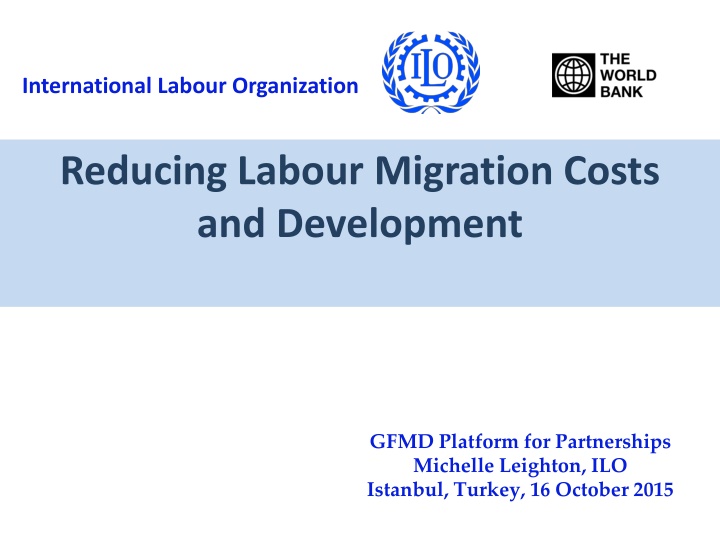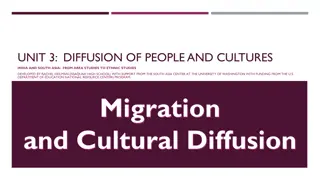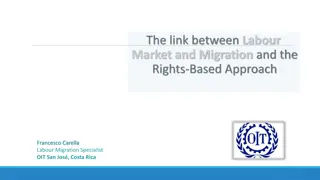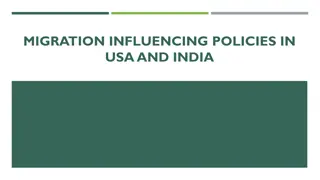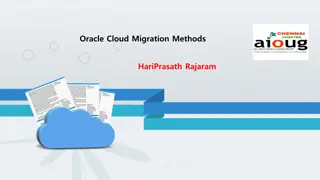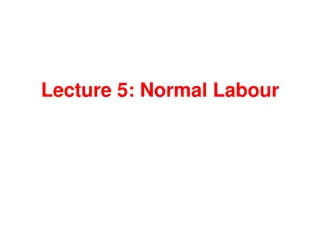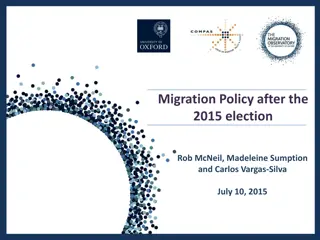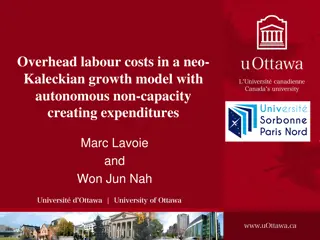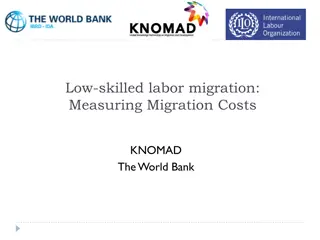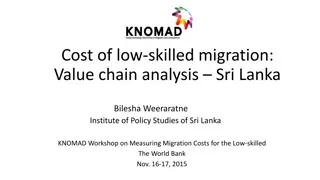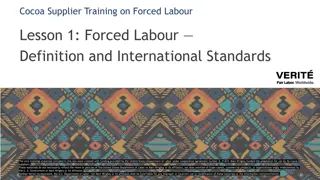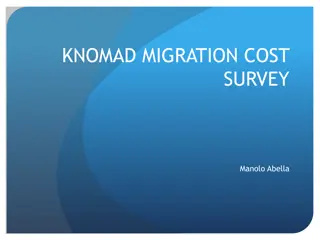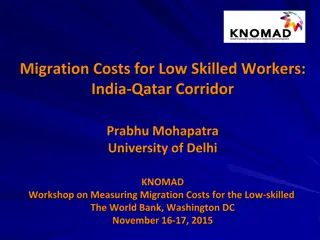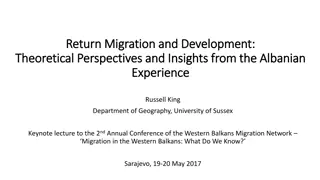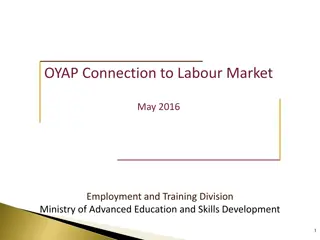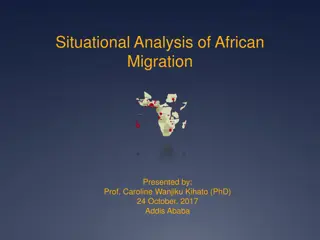Reducing Labour Migration Costs for Development
High migration costs impact wages, working conditions, and development potential. Addressing recruitment fees can increase migrants' disposable income, benefiting both individuals and economies. Explore the importance of reducing migration costs through examples and statistics.
Download Presentation

Please find below an Image/Link to download the presentation.
The content on the website is provided AS IS for your information and personal use only. It may not be sold, licensed, or shared on other websites without obtaining consent from the author.If you encounter any issues during the download, it is possible that the publisher has removed the file from their server.
You are allowed to download the files provided on this website for personal or commercial use, subject to the condition that they are used lawfully. All files are the property of their respective owners.
The content on the website is provided AS IS for your information and personal use only. It may not be sold, licensed, or shared on other websites without obtaining consent from the author.
E N D
Presentation Transcript
International Labour Organization Reducing Labour Migration Costs and Development GFMD Platform for Partnerships Michelle Leighton, ILO Istanbul, Turkey, 16 October 2015
Why do migration costs matter? High costs, such as recruitment fees, that migrants pay for their jobs can result in large debt burdens, poor wages and working conditions, skills mismatch, unfair competition among business, and low development potential. Lack of access to equal and fair wages, decent working conditions, freedom of association and adequate social protection detracts from migrants ability to contribute to development.
Migration costs include lost wages ILO research on wage gaps and non-payment shows discrimination affects both high/low-wage earners Europe Republic of Moldova 46% of returned migrants working for little or no pay 25% receive late payments Armenia and Georgia 20% migrants working for no little or no pay Recruitment fees are up to one-third or a year s salary. 18% to 35% of wage gap between migrants and nationals not explained by education or skills. ILO 2014 Global Wage Report KNOMAD & ILO collaboration To better understand the structure of labour migration costs, fees paid to recruitment agencies, and bilateral agreements
Reducing recruitment fees: the added X factor to development Low Lowering migration costs increase migrants disposable income and maximize the development benefits of labour mobility Reducing remittance costs Reducing recruitment costs Halving remittance transaction costs from 10% - 5% (as per G20): Halving recruitment costs from USD 1000-2000 for low-skilled migrant workers, saves the migrant USD 500- 1000. Saves USD 250 for a low-skilled worker assuming that s/he remits USD 5,000 of his/her USD 7,200 in earnings (under a three-year $200-a- month-contract ). Eliminating recruitment fees per ILO standards could save USD 10 billion a year. For migrants moving from Asia to the Middle East paying USD 5000, savings could be USD billions more per year in that corridor alone. e.g., transaction costs reduced from USD 500 to USD 250.
Bilateral Agreements( BLAs/MOUs) by period of signing: % of total agreements signed (n=137) 43.1% Examining the use of BLAs 22.6% 19.0% 8.0% 7.3% 1990-1994 1995-1999 2000-2004 2005-2009 2010-2014 Ethical recruitment or ethical practice was mentioned in only 8 agreements all of them in Asia and fair and transparent was mentioned only in the India-UAE 2011 MOU. BLAs in Europe, the Americas also score low in identifying and/or regulating recruitment. 5
Agreements Oversight and monitoring mechanisms 2.6% 4.6% 7% 5% 32.9% 36% 50% 59.9% 2% MOU MOA BLA Framework Agreement Protocol Joint Committee periodicity of meetings specified Joint Committee periodicity of meetings not specified Unilateral follow up 6
Mapping BLAs (Phase 2 Knomad/ILO) Objective Examine how BLAs are implemented, their political economy, what factors play a role in successful implementation protecting migrants Methodology In-depth assessment of selected BLAs in 3+ migration corridors Qualitative and policy analysis involving in-depth interviews with experts and negotiators, focus groups with migrants, workers and employers groups Experts workshop to discuss research design Policy briefs on how BLAs can adopt good practice, improve access to health care and social security benefits Policy workshop to validate revised good practice indicators for BLAs/MOUs, based on findings of country studies Work to date Advanced draft policy briefs Concept note for experts workshop 7
Developing the evidence base for Fair Migration Frameworks What is needed is a comprehensive strategy considering short and long-term labour market needs, including to reduce labour migration costs and eliminate migrant recruitment fees. Maximizing the benefits of migration Coherence between national employment and migration policies. Dialogue/international cooperation on fair migration frameworks to meet labour market needs and equitable treatment of migrants. Bilateral & multilateral agreements aligned with international standards and good practices, and eliminating migration and recruitment costs. GFMD may wish to share good practice for BLAs and regional agreements that protect migrants and advance development.
